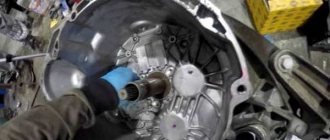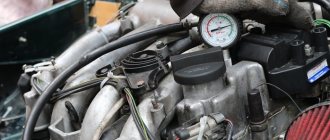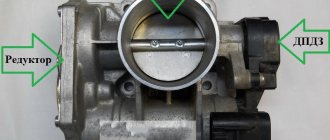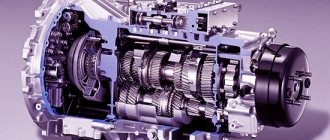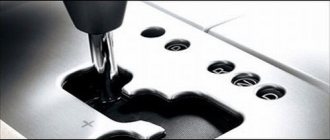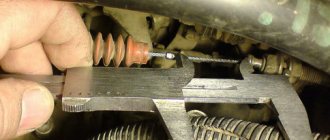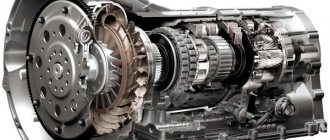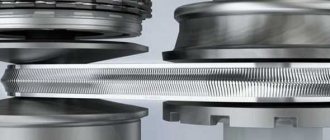Robot training Powershift Focus 3, Fiesta 7, EcoSport
Robot training Powershift Focus 3, Fiesta 7, EcoSport
Post by FORScan » Wed Jul 22, 2015 5:11 pm
We are starting beta testing of the adaptation procedure for Powershift transmissions with a “dry” clutch. The procedure was previously successfully tested on a “live” car (https://forscan.org/forum/viewtopic.php?f=11&t=835), so the risks are minimal. It should work on USB, BT and WiFi adapters of acceptable quality. It is recommended to use version 2.2.5 for Windows to evaluate the quality of the adapter (statistics are shown in the Car->Configuration section). The inspection instructions will also provide instructions on how to pre-check the quality of the adapter.
Full list of models for which the function is applicable:
Differences in the procedure by model:
For Focus 3/C-Max there are some differences in the adaptation procedure from other models. In addition, different models have different calibration idle speeds (at which clutch training is performed). Otherwise the procedures are identical. For testing purposes, we are interested in all of the listed models.
New version released. Testing instructions:
Warning: to save your and our time and nerves, we kindly ask you to carefully read these instructions and follow them. You must also carefully read and follow FORScan's instructions during the procedure. Failure to follow this rule may result in the procedure being interrupted and the vehicle will stop driving until the procedure is completed completely and correctly.
Before performing the procedure, it is recommended to completely warm up the engine and gearbox to operating temperatures. The procedure can be successful on an unheated box, but the effect of the procedure may differ.
Features of adaptation in some car brands
Now let's look at special cases concerning certain brands of cars.
Kia Rio 3
Third-generation Kia Rio cars are equipped with a six- or four-speed automatic transmission.
For her, the adaptation process takes place in several stages:
- Warm up the automatic transmission oil to a temperature of 40 to 120 degrees Celsius. To do this, you need to drive about 15 km or get stuck in traffic jams.
- Find a straight section of road where you can accelerate normally.
- After heating, move the automatic transmission to position N, do not release the brake and wait another three seconds.
- Move the handle to position D, wait three seconds and repeat this operation at least four times.
- Turn on D, and then press the gas 15-25 percent and cover such a distance that the automatic transmission has time to go through all speeds. In this case, the transfer moment should be at the level of 2-2.2 thousand rpm.
- Release the accelerator pedal and stop smoothly. During this period, observe the operation of the automatic transmission when braking with the engine at 40 and 20 km/h.
The option discussed above allows you to train the Ford Focus 3 gearbox from scratch.
Kia Rio 4
Kia Rio 4 cars are equipped with a 6-speed automatic transmission type A6GF1.
To adapt it yourself, take the following steps:
- Find a straight section of the route where there are no obstacles.
- Warm up the transmission fluid to operating temperature. To do this, it is enough to drive 5-10 km.
- Stop and move the automatic transmission handle to the N position.
- Without releasing the brake, wait three seconds, and then move the automatic transmission handle to D.
- Pause again for four seconds.
- Repeat steps 3-5 four times.
- Turn on D, press the gas at 15-25% and organize a short drive so that the transmission “goes through” all gears. At the same time, keep the speed at 2000-2200.
- Release the gas and coast to a smooth stop.
Taking into account official documents, the adaptation of the Kia Rio 4 on the go must be completed four times to obtain the expected result.
Volkswagen Tiguan
Volkswagen Tiguan cars are equipped with two types of automatic transmissions—DSG-6 DQ250 and DSG-7 DQ500. In both cases the adaptation will be identical.
It is carried out when replacing the “box” or control unit, in case of a software update, as well as in other cases described in the article.
The general algorithm of actions is as follows:
- Heat the oil to 65 degrees Celsius. To do this, you can let the engine run at idle or drive in city mode. Use a tester to ensure the temperature is between 66 and 110 degrees Celsius. If this parameter is out of range, adaptation cannot be carried out. In this case, it is forbidden to achieve the desired temperature by increasing the engine speed in position D.
- Connect the scanner and enter the “box” control unit (02), and after that 04 - basic adjustment (parameter 001).
- Reset with the button and exit to the main menu.
- Select 02 again and then 04, but set parameter 002.
- Reset and exit.
- Turn the ignition off and on, press the gas pedal to 100% and hold it in this position for five seconds. This way you can reset the old settings.
After the reset, you can go directly to adaptation and there are several options available here.
With the car parked:
- Hit the brakes.
- Move the gearshift knob from N to D.
- Wait three seconds.
- Repeat this algorithm for five times.
- Repeat this procedure again for R.
In move:
- Move the handle to position D and start moving.
- Press the gas at 25-30%.
- Drive until you shift to sixth gear and reach 80 km/h and above.
- Lower the gas and wait until it stops. It is important that the speed reduction process takes more than 60 seconds.
- Repeat this procedure 10 times.
In the next step, check the quality of the automatic transmission in terms of the presence of shocks. In practice, the automatic transmission begins to change speeds at 3000 rpm.
For comparison, before adaptation, this process occurred in the range from 2200 to 2600 rpm.
Mazda CX5
The car is equipped with a 6-speed ASIN automatic transmission and to adapt it, take the following steps:
- Warm up the gearbox to a temperature of at least 60 degrees Celsius. If possible, it is better to ride to reach the 80 degree mark.
- Place the car on a flat surface, move the handle to position P and turn off the engine.
- Apply the brake, start and wait at least 30 seconds. At this stage and in the future, the brake remains applied.
- Move the automatic transmission to position N and turn off the engine.
- Move the handle to the M- position and, holding the handle with one hand in this position, press Start with the other.
- Turn on the ignition and wait at least five seconds. All this time the handle is held in the M- position.
- Move the automatic transmission handle from M to N position and start the engine.
- Move the handle from neutral to M+ and lock the handle in this position for at least 5 seconds.
- Move from M+ to M- and hold in this position for five or more seconds.
- Make sure the engine revs up to 1200 rpm. As soon as the rise begins, lower the handle from M- to M position and wait about 10-15 seconds. This time should be enough to reduce the speed, and the M1 indicator on the dashboard will blink once.
- Move the handle to P, turn off the car and then release the brake.
As a result of these steps, the transmission begins to operate smoother. The main thing is to observe the specified interval, namely a little more than 5 seconds specified in the instructions.
Toyota Camry
Adapting a Toyota Camry automatic transmission is becoming more and more difficult. Here, to reset the automatic transmission settings, a diagnostic scanner is needed.
After completing the work, it is recommended to drive for at least 10 minutes in quiet mode to give the gearbox time to adapt to the new operating mode.
If you wish, you can buy a Mini-VCI J2534 cable for car diagnostics and use the Toyota Techstream service program.
Let us immediately note that when using such a scheme, the result is not guaranteed.
General algorithm:
- Install the MVCI Driver for TOYOTA.msi. It may be required if the installer does not work correctly on Windows.
- Make changes to the registry to allow Toyota Techstream to see the Mini-VCI J2534.
- Launch the program and go to the Setup section. Here, find the XHorse-MVCI menu.
- Connect the MVCI cable to the USB interface.
- Click on the Connect to Vehicle button in the program.
- Confirm your model and year. This data should be determined automatically.
- Start the car to open access to the diagnostic interface.
- Reset automatic transmission settings.
To avoid errors, it is recommended to perform the reset at a service center using special equipment. Working independently is fraught with mistakes.
Hyundai Solaris
Hyundai Solaris cars are equipped with an automatic transmission type A6GF1; to adapt it, take the following steps:
- Find a straight section of roads where there is no active traffic or other disturbances.
- Warm up the transmission fluid in the automatic transmission to operating temperature. To do this you need to drive at least 5-10 km.
- Stop and move the automatic transmission handle to position N. At the same time, the brake must be pressed.
- Wait three seconds, and after that, move the handle to position D.
- Wait three seconds again.
- Perform the procedure described in steps 3-5 at least four times.
- Move the handle to position D and press on the gas.
- Pressing the pedal 15-25%, drive a short distance so that the gearbox goes through all speeds. At the same time, maintain the speed at 2000-2200.
- Release the gas pedal and wait until the car comes to a complete stop. Do not press the brake - the car should coast to a stop.
- Do the on-the-fly adaptation at least four times.
Passat B 5, 6
Volkswagen Passat 5 and 6 are often equipped with a 6-speed automatic transmission, for which you can make an adaptation yourself.
Initially, it is recommended to remove all errors that are in memory. After that, choose one of two options.
Basic operation of the automatic transmission:
- Turn on the ignition without starting the car.
- Move the automatic transmission handle to position P.
- Press the gas and brake at the same time. Hold them in this position for 20 seconds.
- Turn off the ignition.
- Repeat the procedure at 1-second intervals: ignition, gas + brake.
After completing the above steps, the automatic transmission begins to change gears more smoothly without dragging or jolting.
For sport mode, follow the above steps (1 to 4), but twice without a break between each cycle.
In this case, the automatic transmission will operate in sport mode, characterized by more severe acceleration and increased intervals.
It also becomes possible to adjust the oil flow, which will allow you to start even faster. After this, we can assume that the automatic transmission control unit is connected to the engine.
Adaptation of automatic transmission ford focus 3 when to do
In fact, the manufacturer of the box is Getrag. Ford cars were equipped with 2 types of such boxes:
These gearboxes are completely different, and if there are absolutely no problems with the second ones, then the first ones present their owners with quite a few surprises.
We live in a large metropolis, and we mostly travel to work through morning traffic jams and in the evening from work again through the same traffic jams.
Thus, the main operating mode of automatic transmission in the city is:
These factors have an extremely negative impact on the operation of the automatic transmission and its behavior in the city. This is why these boxes so often cause headaches for their owners. Repairing such boxes can cost one hundred or more thousand rubles, depending on what faults are in the box.
How to solve problems with PowerShift? And how to avoid them in the future.
Symptoms of a faulty TCM module are:
Unfortunately, these modules cannot be repaired; replacement with a new one is not possible in any service, and its cost as of May 2021 is about 30,000 rubles.
Unfortunately, they are quite difficult to diagnose, because it is not clear what is causing the problem: 1. Lack of torque in the lower rpm segment. It is for this reason that two liter engines have many times fewer problems with gearboxes. Chip tuning firmware will increase torque in the lower rpm segment, which will allow the box to operate in a more gentle mode. 2. Incorrect self-learning program for the automatic transmission control module. Updating the automatic transmission control module and its adaptation. In the latest updates for PowerShift boxes, Ford has practically solved the problem with jerking and twitching, and resetting the TCM self-learning parameters will allow the box to operate smoother and more stable, moreover, shifts will become faster and you will be pleased with the increased dynamics of the car. 3. Mechanical faults in the automatic transmission itself. Mechanical faults can only be treated by disassembling and troubleshooting the gearbox itself. We do not repair automatic transmissions, so we cannot help with this, but in most cases the problem lies precisely in the software, lack of torque in the lower speed segment and problems in the self-learning of the TCM module.
We highly recommend that all owners of Ford Focus 3 family cars with Powershift APK carry out chip tuning of the car.
Source
Frequency of adaptation
Adapting the gearbox makes it possible to significantly extend the period of operation of the gearbox. The transmission manufacturer for Ford and Volvo vehicles recommends performing this procedure during each scheduled vehicle maintenance (preferably when the vehicle reaches a mileage of every 10,000 km).
Although unscheduled procedures are also possible. Often they can be caused by deviations in the operation of the Power Shift manual transmission, the appearance of interference when changing gears and difficult movement of the car when switching torque.
Powershift transmission problems. All about the robot.
Box on all Getrag 6DCT250
Clutch: dry
(same for 1.6 and 2.0) Maximum torque: 240-280 Nm
Current firmware as of (08/15/2017)
Engine 1.6:
FV6P-7J104-JF
from July 12, 2017
Part numbers:
– Clutch kit LUK Clutch Kit LuK RepSet 2CT
602 0008 00
1 Double clutch 2 Lever actuator for clutch 1 (K1) 3 Return springs for lever actuator K1 4 Lever actuator for clutch 2 (K2) 5 Return springs for actuator K2 6 Guiding sleeve 7 Engagement bearings for clutches K1 and K2 8 Washers for clutches K1 and K2 9 Retaining ring 10 Mounting screws for lever actuators 11 Mounting screws for guiding sleeve 12 Mounting screws for servo motors 13 Nuts for attachment to the flywheel
Tools for work
LuK basic tool kit, part no. 400 0418 10 LuK Ford tool kit, part no. 400 0427 10 LuK reset tool kit, part no. 400 0425 10
Comments from Ford Sollers regarding PS (ZR Magazine)
| What was your mileage on a car with PowerShift before the first clutch repair? | |||
| Up to 50,000 km | 146 | ||
| quote: | |||
| How does the manufacturer solve the problems with the twitching of the Powershift robotic gearbox on the Focus and does it plan to abandon it altogether? This problem concerns a robot with a dry clutch, which is installed on the Focus. Wet clutch gearboxes are designed for more powerful Ecoboost petrol engines and diesel engines (Mondeo, Kuga, Galaxy and SMAX), and no such faults have been reported with them. The concern is not abandoning Powershift boxes. Engineers continue to improve the dry robot; We are confident that we were able to solve the problems of the first modifications, so we are installing it on the new Ecosport. The jerking of the “dry” robot is associated with incorrect operation of the clutch unit. The reason may be software, as well as a leak in the rear crankshaft oil seal of the engine: oil gets onto the clutch discs, which is why they begin to slip. When a customer makes a complaint, the dealer must make a number of checks. Troubleshooting depends on the specific case - this could be a software update, replacing the oil seal or oil seal and clutch. Clutch slippage is checked using diagnostic equipment: if everything is within acceptable limits, the clutch can simply be washed. When updating the software, it is important to adapt the box; this is done in a service station, without any travel. Modified parts are installed both during warranty repairs and on the assembly line. Machines with new software began to be released in the summer of 2013. There were changes in the clutch assembly itself, they affected the material of the discs and fastening elements. The warranty for the entire gearbox has been extended to three years, and for the clutch to four. Comment by ZR. In the “drive” selector position and with the brake pedal pressed, the clutch of the “Powershift” robot does not completely open and slips a little, so after a while local overheating of the unit is possible. Experts advised not to stand there for more than two or three minutes and to move the selector lever to “neutral” or “parking”. | |||
A 6-speed PowerShift® automatic transmission is available on the 2015 Focus, Fiesta and EcoSport 1.6L engines, delivering greater fuel efficiency and a smooth driving experience. Due to its uniqueness and recent design improvements to the transmission, the following information may help you better explain the benefits of this transmission.
Improved fuel efficiency:
Provides a 7-9% reduction in fuel consumption compared to a traditional automatic gearbox; The dry clutch design eliminates losses due to transmission fluid pumping; Smaller size = reduced weight; Good performance; Faster gear shifting; Dual clutch technology provides constant torque to the drive wheels.
New gear ratios with a wider range for improved efficiency; Improved gear control for smoother shifts; Calibration improvements to provide smoother driving at low acceleration and when driving in high altitude conditions and/or high temperatures; Improvements in shift lever force through changes to the parking lock system, making starting easier, especially when stopping on a slope; Changing clutch material for better performance over a wide temperature range; Improvements for smoother gear shifting at low acceleration; Improvements in shift lever force through changes to the parking lock system, making starting easier, especially when stopping on a slope.
What to expect? The following symptoms may occur when operating a PowerShift® transmission and are normal:
Important tips to take full advantage of your PowerShift® transmission:
For smoother operation, refrain from frequently sharply pressing the gas pedal while driving; When starting from a stop, greater acceleration will ensure smoother clutch operation; When driving in stop-and-go traffic, leave sufficient distance between your vehicle and the vehicle in front; this will allow you to move smoothly; When stopping on a slope, keep your foot on the brake pedal until you are ready to move; moving the car slowly on a slight slope without accelerating will lead to clutch wear; PowerShift® has a break-in period during the first 1,500-2,000 km where it continually makes electronic adjustments to optimize shifting and acceleration.
Source
How the adaptation algorithm works
The principle of the adaptation algorithm is that it is initially configured to interact with transmission lubricant, which has factory properties, as well as with a fully operational transmission.
When the characteristics of the oil deteriorate and parts wear out on modern automatic transmissions, the operation of the latter is adjusted. We wrote about this above.
After a major overhaul of the box, or after filling in new lubricant, the manufacturer provides for forced settings by erasing the data to factory settings.
If this is not done, the control unit will function with the old settings, based on the previous state of the lubrication and transmission.
As a result, the system will adjust the operation of the solenoids, which, when closing/opening, will move with a delay to equalize the pressure.
Weaknesses of PowerShift 6DCT450 and problems with the mechanical part
The box is sensitive to overheating and the quality of the transmission fluid. Under non-ideal operating conditions, the electronic control unit is the first to suffer. The mechanical part is more durable, but its service life rarely exceeds the 100 thousand km mark.
- During operation, clutch discs gradually wear out.
- A characteristic push at the start of movement is a clear sign that the process has reached a critical point.
- An additional symptom is noticeable jolts when changing gears.
- If the output is exceeded, the clutch will begin to slip.
Among the factors that accelerate clutch wear are aggressive driving style, frequent slipping on slippery roads, which is not uncommon for the climate of most regions of the Russian Federation. With proper operation and compliance with the manufacturer’s recommendations, owners of cars with the PowerShift 6DCT450 robotic transmission are faced with unpleasant manifestations of resource depletion when driving from 90 thousand km or more.
- When clutch discs wear out, repairs are rarely limited to replacing them.
- The damper also becomes unusable.
- The springs begin to dangle or crack, and the plastic guides break.
- As a result, increased vibration occurs and periodic shocks occur when moving.
Another weak point is the oil seal cover. Its design features lead to premature wear of the sealing ring. The result is a leak, the lid is skewed.
The next unpleasant nuance is related to the transmission fluid filtration system. We replace the external filter, and this must be done every 15-20 thousand kilometers. The internal filter is not replaceable. It is designed for the entire life of the transmission, but experts are faced with a certain problem:
- when disassembling the box after it fails, the internal filter is often clogged with fine suspension;
- it causes a drop in pressure in the box and disruption of the hydraulic drive;
- It is necessary to completely disassemble the transmission in order to replace the filter.
Another common breakdown is wear of the clutch forks. You will know this by the characteristic signs: even with a slight backlash, the gears shift hard, and jerks appear when moving. Often, car owners receive a message from the electronic control system about an error related to the clutch forks. There may be two reasons:
- displacement of the magnet from which the electronic unit reads information;
- failure of its plastic fastening.
To fix the problem, the transmission will have to be disassembled. It doesn't come cheap. Also, the bearings of the rear cover and input shaft often wear out. This manifests itself in a clearly distinguishable hum in the cabin and vibration.
Common failures include wear and tear of valves that regulate hydraulic pressure. You can understand the breakdown by the delay when changing gears, jerking when driving.
